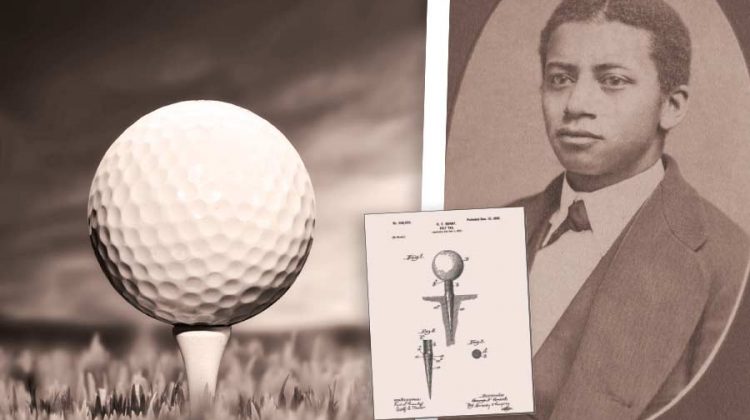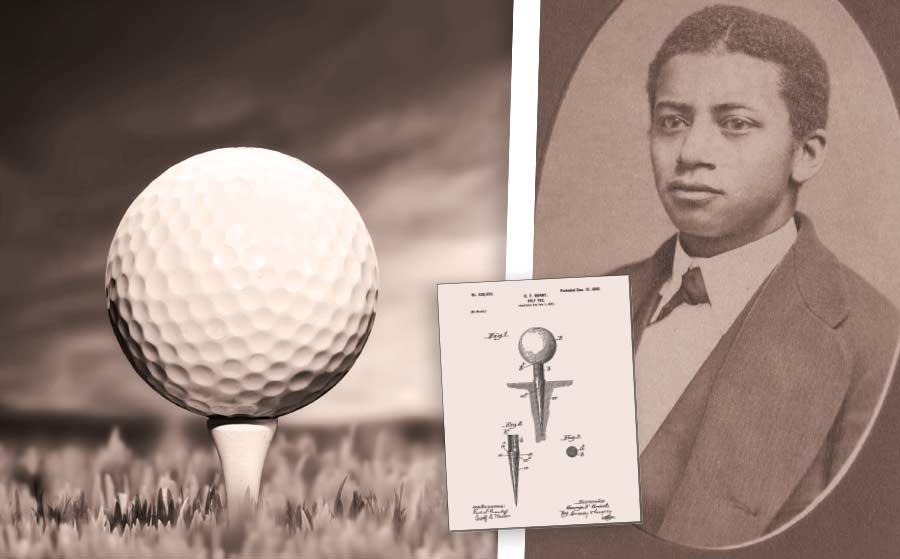

Good Morning POU!
This week we’ll look back in history at how African-Americans broke ground in the game of golf.
We began by paying tribute to the inventor of the modern golf tee.
George Fitzgerald Grant
George F. Grant, who was not only one of the first African-American golfers in post-Civil War America, he was one of the first African-American dentists. His was the blueprint for today’s wooden and plastic tees. He owned the first patent but was also the last to be recognized for his invention.
In the 19th century, teeing it up didn’t mean sticking a peg in the ground to hold the ball in the game of golf. At least not until Dr. George Grant invented the tee itself.
Grant — born in Oswego, N.Y., in 1847 — worked for his hometown dentist as a youngster, initially as an errand boy and eventually as an assistant in the lab. At the age of 19, determined to make his own way in the world, Grant left Oswego for Boston, but his funds were certainly no match for his determination.
He found work as a dental assistant and two years later earned a spot in the new Harvard Dental School. In 1870 Grant graduated with honors, becoming just the second African-American graduate of the Dental School.
The Dental School hired Grant upon graduation and he stayed for four years, specializing in his work with patients with defects on the roofs of their mouths. Grant formed individual inserts for those with cleft palates, which greatly helped those suffering in both speaking and eating. His patented oblate palate made him a forerunner in the field, well-known in the dental community both nationally and internationally as he left Harvard to begin his own practice.

His hobby and passion became golf in that time. His daughter, Frances, recalled caddying for her father in the 1880s in the Boston suburb of Arlington Heights, where her father had built a meadow course next to his country home. The family moved to Beacon Hill, but Grant took back to Arlington Heights in his free moments, golf clubs in hand.
He and his playing partners were among the first African-American golfers in post-Civil War America. And his partners were also among the most acclaimed in Boston — civil rights activist Archibald Grimke, noted restauranteur Howard Lee, and Butler Wilson, an 1884 Boston Law School graduate.
Grant found the method of teeing up a ball and pinching damp sand into a launching pad both inconsistent and tiresome. How could a player determine the preferred height of sand each time? Besides, the constant bending over at every tee box to form the little mounds was both physically taxing and, on rainy and inclement days, messy. So, tired of the inconvenience, Dr. Grant used his skills to improve the game and came up with an invention that would forever have an impact. On Dec. 12, 1899, he received U.S. patent No. 638,920, the world’s first patent for a golf tee.
Dr. Grant however, was more innovator than businessman and he never marketed his invention. He gave some of the tees to friends and playing partners, but the majority of them were squirreled away at his residence. When he died in 1910, his invention apparently died with him.
But his invention would become the blueprint for today’s wooden and plastic tees. Before Grant’s invention, golfers carried buckets of sand from hole to hole and built up sand mounds from which to hit the balls. George Grant’s small invention has become a standard piece of equipment for all golfers.
Yet, because his invention reached a small audience, he was not recognized for it for several decades. Another dentist — Dr. William Lowell of Maplewood, N.J. — popularized the tee in 1921, when he manufactured the ‘reddy tee,’ which was painted red. (editor’s note: coincidence that another northeastern dentist – Caucasian – found financial success with the same design, painted red?)
In 1991, nearly a century after his patent, the United States Golf Association finally gave Grant recognition for his contribution to the game of golf.

